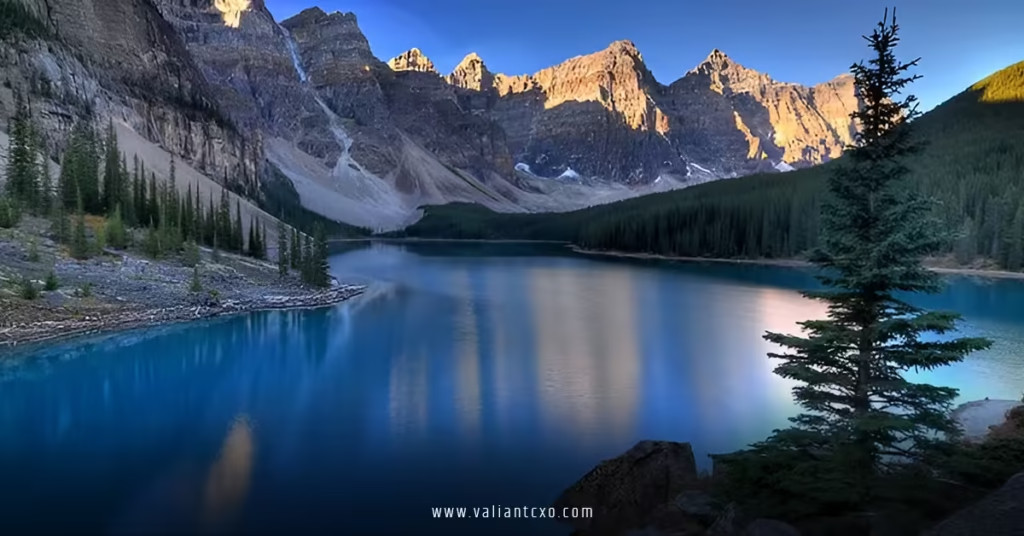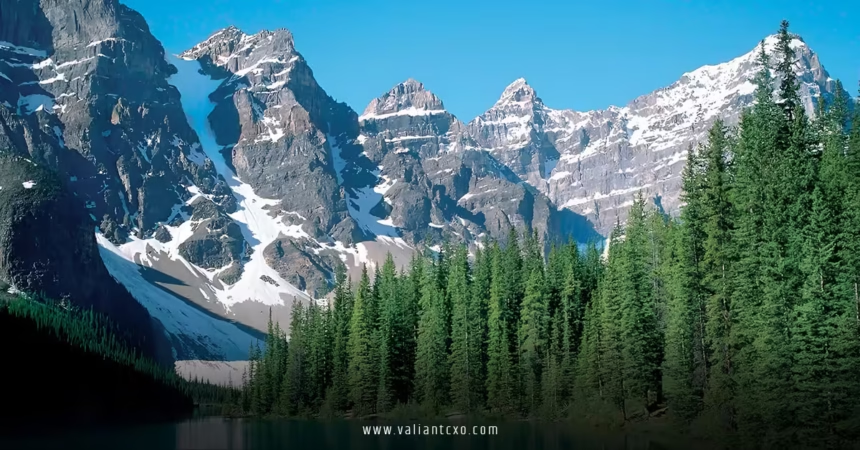Best time to go to Canada? It’s a question that sparks endless debates among travelers. Canada’s massive, stretching from the rugged Pacific coast to the icy Atlantic shores, with climates as diverse as its landscapes. Whether you’re dreaming of skiing down powdery slopes, marveling at vibrant fall foliage, or soaking up summer vibes in bustling cities, pinpointing the best time to go to Canada depends on what kind of adventure you’re craving. Let’s dive into this guide, packed with insights to help you plan the trip of a lifetime, no matter your vibe.
Why Timing Matters When Planning Your Trip to Canada
Canada’s weather is like a moody artist—unpredictable, dramatic, and wildly varied depending on where you are. From Vancouver’s mild, rainy winters to Quebec’s bone-chilling cold, the best time to go to Canada hinges on your destination and what you want to experience. Are you chasing outdoor adventures, cultural festivals, or maybe just a budget-friendly escape? Timing can make or break your trip, affecting everything from costs to crowd levels. Let’s break it down by season, region, and activity to find your sweet spot.
Understanding Canada’s Diverse Climate
Canada’s size is no joke—it’s the second-largest country in the world, spanning six time zones. That means the best time to go to Canada varies wildly. Coastal British Columbia might be mild and drizzly in January, while Manitoba’s prairies are locked in a deep freeze. Meanwhile, the Maritimes get slammed with snow, and the Rockies? They’re a winter wonderland. Knowing the climate of your destination is key to picking the best time to go to Canada.
The Best Time to Go to Canada by Season
Each season in Canada paints a different picture. Let’s explore what spring, summer, fall, and winter have in store, so you can decide when to pack your bags.
Spring (March to May): A Time of Renewal
Spring is like Canada hitting the refresh button. The snow starts to melt, flowers bloom, and the air feels crisp but hopeful. March can still feel wintry, especially in places like Alberta or Quebec, with temperatures hovering between -5°C and 10°C (23°F to 50°F). By May, things warm up, hitting 15°C to 20°C (59°F to 68°F) in southern regions like Ontario.
Why choose spring as the best time to go to Canada? Fewer tourists mean you’ll have popular spots like Banff or Niagara Falls almost to yourself. Plus, prices for flights and accommodations are often lower. It’s perfect for hiking, spotting wildlife (think bears waking up from hibernation), or catching early festivals like the Tulip Festival in Ottawa. Just pack layers—spring weather can be a bit of a tease.
What to Do in Spring
- Hiking: Trails in the Rockies or Algonquin Park are less crowded.
- Maple Syrup Season: Head to Quebec for sugar shack experiences.
- City Vibes: Explore Toronto or Vancouver as they shake off winter.
Summer (June to August): Peak Adventure Season
Summer is Canada’s rockstar season, hands down. Warm weather—think 20°C to 30°C (68°F to 86°F)—makes it the best time to go to Canada for outdoor lovers. From kayaking in British Columbia’s Gulf Islands to road-tripping along the Cabot Trail in Nova Scotia, summer opens up endless possibilities. Cities like Montreal and Vancouver buzz with festivals, from jazz to fireworks.
But here’s the catch: summer is peak tourist season. Expect higher prices and crowded hotspots like Banff or Prince Edward Island. Book early to snag deals, especially for national parks. If you’re wondering when’s the best time to go to Canada for warm weather and long days, summer’s your answer—just bring sunscreen and patience for crowds.
Summer Highlights
- National Parks: Banff and Jasper are breathtaking but busy.
- Festivals: Catch Calgary Stampede or Montreal’s Jazz Festival.
- Coastal Adventures: Whale watching in British Columbia or Newfoundland.
Fall (September to November): Nature’s Masterpiece
If you’re chasing Instagram-worthy views, fall might just be the best time to go to Canada. The forests explode into reds, oranges, and golds, especially in Ontario’s Muskoka region or Quebec’s Laurentians. Temperatures range from 10°C to 20°C (50°F to 68°F) in September, cooling down by November. It’s a shoulder season, so you’ll find fewer crowds and better deals than summer.
Fall is perfect for hiking, photography, or cozying up in a cabin. Cities like Quebec City feel magical with crisp air and vibrant leaves. Just watch out for early snow in northern or mountainous areas by late November. For many, fall strikes the perfect balance, making it a strong contender for the best time to go to Canada.
Fall Must-Dos
- Leaf Peeping: Drive the Cabot Trail or visit Algonquin Park.
- Harvest Festivals: Taste local wines in Niagara or apples in Annapolis Valley.
- Hiking: Trails are quieter, and the scenery is unreal.
Winter (December to February): A Snowy Wonderland
Winter transforms Canada into a playground for snow lovers. Temperatures can plummet to -20°C (-4°F) in places like Winnipeg or Ottawa, but coastal cities like Vancouver stay milder, around 0°C to 7°C (32°F to 45°F). If skiing, snowboarding, or ice skating is your thing, winter is hands-down the best time to go to Canada. Resorts like Whistler or Mont-Tremblant are world-class, and you can’t beat the vibe of a Canadian winter festival.
On the flip side, winter travel requires preparation. Pack for the cold, and expect higher costs at ski resorts. If you’re not into snow, stick to cities like Toronto or Montreal, where indoor attractions like museums and holiday markets keep things lively.
Winter Activities
- Skiing: Whistler, Banff, or Mont-Tremblant are top picks.
- Winter Festivals: Quebec’s Winter Carnival is a bucket-list event.
- Northern Lights: Head to Yukon or Northern Manitoba for a chance to see the aurora.
Best Time to Go to Canada by Region
Canada’s regions are like different worlds. Here’s a quick guide to the best time to go to Canada based on where you’re headed.
British Columbia: Mild and Marvelous
British Columbia is a year-round gem, but spring and fall are often the best time to go to Canada’s west coast. Vancouver’s mild climate (10°C to 20°C in spring/fall) makes it great for city exploration or hiking. Summer is ideal for whale watching or visiting Vancouver Island, while winter draws skiers to Whistler.
Prairies (Alberta, Saskatchewan, Manitoba): Wide Open Spaces
Summer and early fall shine here, with warm days perfect for exploring Calgary or Winnipeg. Winter is brutal—think -30°C (-22°F)—but it’s the best time to go to Canada for snow sports in Banff or Jasper. Spring can be muddy, so plan accordingly.
Ontario and Quebec: Urban and Scenic
Late spring to early fall (May to October) is the best time to go to Canada for Toronto, Ottawa, or Montreal. Summer brings festivals, while fall’s foliage is a showstopper. Winter is great for Quebec City’s carnival or skating on Ottawa’s Rideau Canal.
Atlantic Canada: Coastal Charm
Summer and early fall are the best time to go to Canada’s Maritimes (Nova Scotia, New Brunswick, Prince Edward Island, Newfoundland). Warm weather and calm seas make it ideal for coastal drives or lobster feasts. Winter is quiet but cold and snowy.
Northern Canada: Wild and Remote
The best time to go to Canada’s northern territories (Yukon, Northwest Territories, Nunavut) is summer for milder weather and endless daylight. Winter offers northern lights but demands serious cold-weather prep.

Activities and Events: Matching Your Interests to the Season
What’s your travel style? The best time to go to Canada depends on what you love to do.
Outdoor Adventures
- Hiking and Camping: Summer and fall for national parks like Banff or Fundy.
- Skiing/Snowboarding: Winter for resorts like Whistler or Big White.
- Wildlife Watching: Spring for bears, summer for whales, winter for polar bears in Churchill.
Cultural Experiences
- Festivals: Summer for music and food festivals; winter for holiday markets.
- City Exploration: Spring or fall for fewer crowds in Toronto, Vancouver, or Montreal.
Budget Travel
Want to save some cash? Spring and fall are often the best time to go to Canada for deals on flights and hotels. Avoid peak summer or major winter holidays to stretch your budget.
Practical Tips for Planning Your Trip
No matter when you choose the best time to go to Canada, a little planning goes a long way. Here are some tips to make your trip smooth:
- Book Early: Summer and winter peak seasons fill up fast, especially in national parks.
- Pack Smart: Layers are your friend, especially in spring and fall.
- Check Weather: Canada’s weather can change on a dime, so stay updated.
- Visa and Travel Docs: Ensure your passport is valid, and check if you need an eTA (Electronic Travel Authorization).
Conclusion: When Is the Best Time to Go to Canada?
The best time to go to Canada depends on your vibe—whether you’re chasing snowy slopes, vibrant festivals, or quiet trails framed by fall colors. Summer (June to August) is perfect for warm weather and outdoor adventures but comes with crowds and higher prices. Fall (September to November) offers stunning scenery and fewer tourists, while spring (March to May) is budget-friendly and peaceful. Winter (December to February) is a snowy paradise for skiers or northern lights chasers. Pick your season, pack your sense of adventure, and Canada will deliver an unforgettable experience. So, what are you waiting for? Start planning your Canadian getaway today!
FAQs About the Best Time to Go to Canada
1. What’s the absolute best time to go to Canada for budget travelers?
Spring (March to May) and fall (September to November) are the best time to go to Canada for budget travelers, with lower flight and accommodation costs compared to peak summer or winter seasons.
2. Is winter a good time to visit Canada if I don’t like snow?
Winter can still be a great time to visit Canada’s cities like Vancouver or Toronto, where milder weather and indoor attractions like museums or holiday markets keep things exciting.
3. When’s the best time to go to Canada for northern lights?
Late fall to early spring (October to March) is the best time to go to Canada for northern lights, especially in remote areas like Yukon or Northern Manitoba.
4. Are there any months to avoid when planning a trip to Canada?
It depends on your preferences, but February can be brutally cold in the Prairies, and November might bring unpredictable weather. Still, every month has its charm!
5. What’s the best time to go to Canada for festivals?
Summer (June to August) is the best time to go to Canada for festivals, with events like the Calgary Stampede or Montreal Jazz Festival drawing huge crowds.
For More Updates !!!valiantcxo.com


